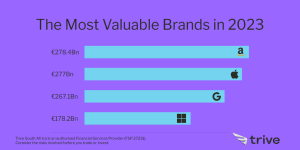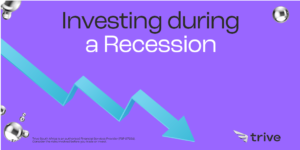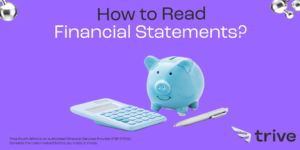
As an investor, you are afforded several methods that you can use to create your optimal portfolio, which is usually achieved by diversifying investments through investing both locally and even internationally.
Diversification, which helps mitigate and lower the risk of the investor’s portfolio, may be one of the essential strategies to endure the market’s volatility better. Rather than researching and identifying each stock and instrument to invest in to pursue optimal asset allocation, investors are afforded several methods they may utilise to diversify their portfolio. One security available at an investor’s disposal is an Exchange Traded Fund (ETF).
So, what is an ETF?
An Exchange Traded Fund (ETF) is a structured investment instrument specifically created to track the performance of an existing stock, a particular index, commodities, or any specific asset. As the name suggests, an ETF is registered and listed within stock exchanges, trades like any security listed in the stock exchange, and likewise can be bought and sold like any other security in the stock exchange, which makes the ETF open-ended and liquid in nature.
Some ETFs listed on the JSE offer investors the opportunity to gain international exposure, like the Satrix S&P500 or Sygnia FTSE 100. But they also expose the investor to inherent risks involved with international investing, like currency fluctuations which investors should keep in mind.
One risk that investors should note, especially if converting Rand (ZAR) into a foreign currency, is currency risk. For example, a South African investor who has invested in the iShares Core FTSE 100 UCITS ETF, which is priced using the British Pound (GBP), would be exposed to the fluctuation of the Rand against the Pound.
Due to numerous factors, many ETFs that aim to track particular international indexes tend to have returns that differ from the benchmark index they are tracking, a phenomenon referred to as a tracking error, factors such as: –
- Expense Ratio: ETFs charge fees to track a particular index, commodity, or asset. The fees charged are deducted before the return of the ETF is released, which can cause a difference between the ETFs returns versus the benchmark index’s returns.
- Rebalancing and Timing Costs: As ETFs usually track an index, if the benchmark index rebalances its portfolio by adding or removing a stock, the ETF must follow suit to reflect the new position the index has taken. When buying or selling the stock, the ETF may incur trading costs associated with such transaction, which can also lead to a difference in the ETF returns compared to the benchmark index’s returns.
- Sampling: Some ETFs do not fully replicate the benchmark index’s portfolio share for share as sometimes it is unrealistic or unfeasible to hold every stock in the benchmark index as some indexes have thousands of stocks in their portfolio, which may lead to differences in returns. To save on costs, the manager may choose not to include the stock with a negligible weight on the benchmark index.
- Illiquidity: The inability to buy or sell stocks for a fund can also lead to tracking differences.
- Cash Drag: Usually the indexes do not hold cash but ETFs do, which they can get from dividend payouts and trading activities. Most ETFs periodically choose to re-invest the money received, and the difference between receiving cash and re-investment by the ETF can lead to a worsened performance by the ETF, thus leading to a lower return than the benchmark index.
How do ETFs differ from Unit Trusts?
It is very difficult to talk about ETFs without mentioning Unit Trusts due to the similarity of their offerings: they both offer the opportunities to invest in a wide range of asset classes and exposure to niche markets, both offers managed pools of individual securities, and they both are a popular tool for diversification. Even though they may be similar in some aspects, they also have several key differences.
- Trading: ETFs trade like stocks, traded throughout the day; thus, prices fluctuate throughout the day. Unit Trusts have orders executed once per day, usually at the end of trading hours, with all the investors on that particular day paying the same price for the share of the fund.
- Legal Structure: An ETF is traded on a stock exchange such as the Johannesburg Stock Exchange(JSE) and a unit trust is a legal savings vehicle regulated by the Collective Investment Schemes Control Act (CISCA).
- Minimum Investment: Since ETFs are listed on the stock exchange and trade as stocks, they do not require a minimum investment and can be bought at the ETF’s market price (usually the price of a unit share), whereas Unit Trusts require a minimum initial amount.
- Tax Efficiency: ETFs can also be bought as part of a Tax-Free Savings Account (TFSA), which is extremely tax efficient but has annual limits to the amounts invested per tax year.
Different structures of ETFs
As ETFs cover most major asset classes and sectors, the ETF market offers an investor a broad range of offerings to select from depending on the investors’ risk appetite and tolerance. ETFs can be broadly classified into either of the two strategies: Passive ETFs and Actively Managed ETFs.
Passive ETFs are investment instruments that seek to replicate the performance of a specific index. The index might be a there is no limit to what type of index. Passive ETF can either fully replicate the index by investing in stocks of the indexes’ portfolio, or in some instances; the ETF may be a cherry-picked combination of stocks within the index that gives the representative risk profile of the index.
On the other hand, Actively Managed ETFs are created to outperform a specific benchmark. As much as the Actively Managed ETF has a particular benchmark index, the ETFs may adopt and employ specific strategies as they see fit, like different market timing as the benchmark index or even changing their sector allocations.
Within these strategies, there are three main classifications of US ETFs:
- Exchange-Traded Open-End Fund
Most of these US ETFs must be registered with the Securities and Exchange Commission (SEC) as open-end under the agency’s Investment Company Act of 1940. This type of ETF offers a uniquely flexible investment opportunity that allows investors to gain a particular risk exposure at their desired level. Even their diversification restricts the ETF from investing more than 5% of the portfolio on any one security of an individual company, the structure also allows a superior portfolio management of the ETF than the Exchange-Traded Unit Investment Trust, as the Exchange-Traded Open-End Fund is not required to invest in all the shares of the particular index.
An example of such an ETF would be the China SME ETF (SZSE SME 100 ETF). The ETF’s main objective is to replicate the returns that closely match the performance of the securities in the Shenzhen SME index in China by investing in the stocks of the companies that make up the index.
- Exchange-Traded Unit Investment Trust (UIT)
This type of ETF, just like Exchange-Traded Open-End Fund mentioned above, is governed Investment Company Act of 1940. These UITs are created as trusts that use a complete replication strategy and invest in all the shares of the particular index. UITs are also limited to a maximum of 25% allocation of the ETFs assets to a single investment.
One of the largest and most well-known UIT ETFs is the SPDR S&P 500 ETF Trust, which aims to replicate the performance of the S&P 500 Index, one of the most extensive indexes in the world.
- Exchange-Traded Grantor Trust
These ETFs are required by law to be registered with the SEC under the Securities Act of 1933 and not under the SEC’s Investment Company Act of 1940, like the two above ETFs. These ETFs are receipts issued by the trust, representing the individual investors’ ownership of the underlying shares of the company in which the ETF has invested.
The primary example of this type of ETF would be Holding Company Depository Receipts, which are created to replicate a particular industry or sector.
Why consider investing in ETFs?
ETFs, offer investors the opportunity and convenience of diversifying their portfolio as they cover the majority of securities, industries, and niche markets. Thus, they would be ideal for any investor looking for a pool of securities for diversification purposes.
Even though most ETFs are traded daily, they are less volatile than individual stocks while offering liquidity to investors, which may be ideal should the investor want to exit a position quickly.
Sources: Investopedia, Bloomberg, ETF.com
Disclaimer: Trive South Africa (Pty) Ltd, Registration number 2005/011130/07, and an Authorised Financial Services Provider in terms of the Financial Advisory and Intermediary Services Act 2002 (FSP No. 27231). Any analysis/data/opinion contained herein are for informational purposes only and should not be considered advice or a recommendation to invest in any security. The content herein was created using proprietary strategies based on parameters that may include price, time, economic events, liquidity, risk, and macro and cyclical analysis. Securities involve a degree of risk and are volatile instruments. Market and economic conditions are subject to sudden change, which may have a material impact on the outcome of financial instruments and may not be suitable for all investors. When trading or investing in securities or alternative products, the value of the product can increase or decrease meaning your investment can increase or decrease in value. Past performance is not an indication of future performance. Trive South Africa (Pty) Ltd, and its employees assume no liability for any loss or damage (direct, indirect, consequential, or inconsequential) that may be suffered from using or relying on the information contained herein. Please consider the risks involved before you trade or invest.




